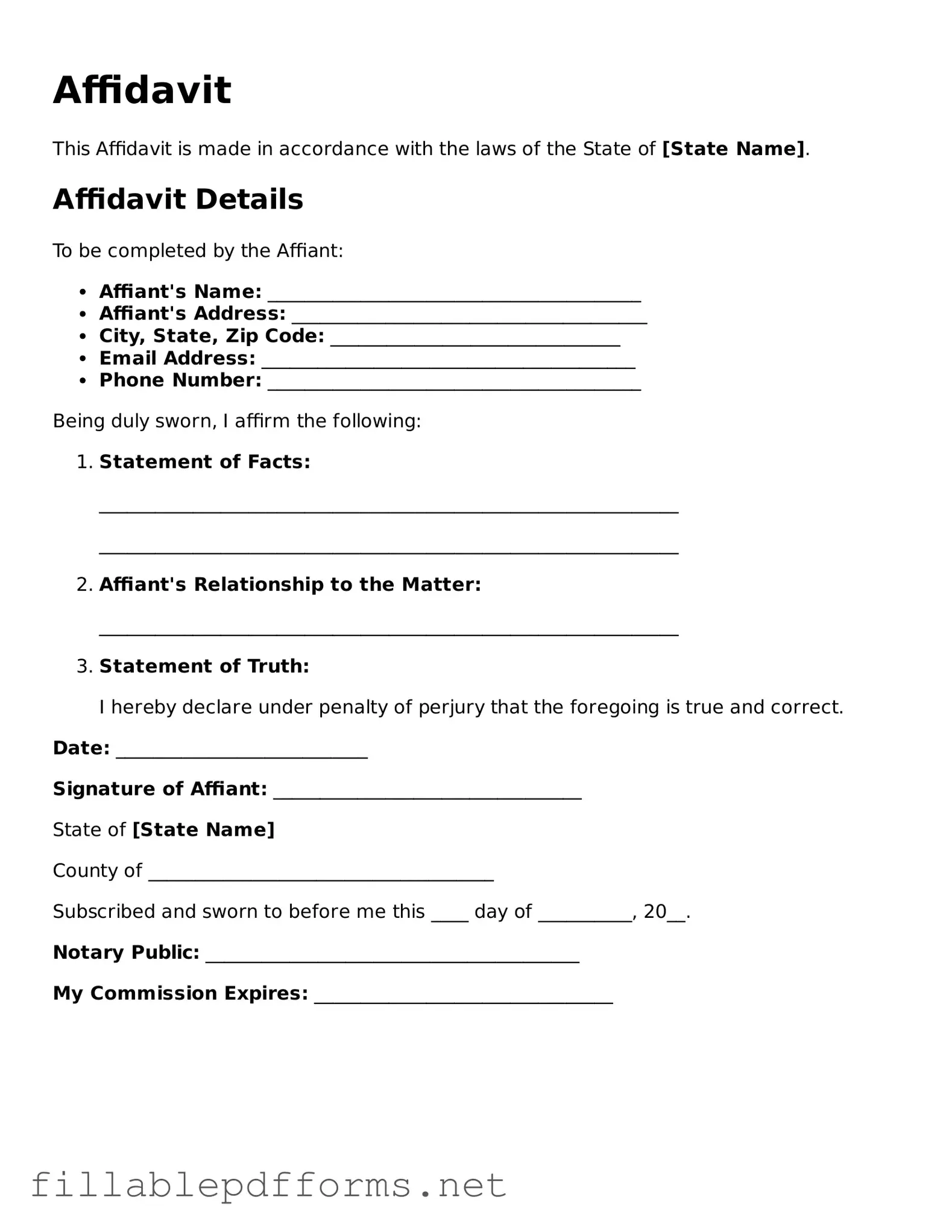An affidavit is a crucial legal document that serves as a written statement made under oath. It holds significant weight in various legal proceedings, providing a way for individuals to present facts and evidence in a formal manner. Typically, an affidavit includes the affiant's name, address, and a detailed account of the facts they are attesting to. The form also requires a signature, along with the date and, in many cases, the presence of a notary public or another authorized official who verifies the identity of the affiant. This process ensures that the information provided is both credible and legally binding. Affidavits can be used in numerous contexts, such as court cases, financial transactions, or to support claims in various administrative processes. Understanding the structure and requirements of an affidavit is essential for anyone looking to navigate legal matters effectively.
